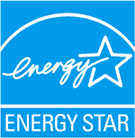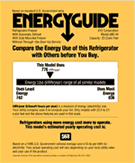Clothes Washers
Get Rebates,
Incentives & Services
Introduction
A typical household clothes washer can cost as much as $1,500 to operate over its lifetime (12 years), and almost 90% of all energy used in operating a washing machine goes towards heating the water. By investing in a new, efficient front- or top-loading washer, homeowners can dramatically save energy, water and money.
Technology Options
Horizontal-axis washers, also known as tumble-action or front-loading machines, typically have a door on the front of the washer and use a basket that rotates horizontally to wash, rinse and spin the clothes. The rotation of the basket turns the clothes in and out of a small amount of water that collects at the bottom of the basket. Because the clothes tumble through the water, these machines typically fill to only about one-third the water level of conventional top-loading machines. In addition, no agitator is required with this technology; many users find these washers to be gentler on clothes because snagging on a central agitator is one of the causes of wash-related wear and tear on clothing.
In a conventional top-loading, vertical-axis washer, the basket must be filled to a water level that will cover the clothes. The agitator then moves the water to wash the clothes. High-efficiency top-loading clothes washers tend to use modified technology: the agitator may be smaller, or eliminated altogether; clothes may be tumbled in a manner more similar to front-loading washers; and clothes may be washed in multiple-spray wash and rinse cycles instead of a single wash cycle with a tub of water.
High-efficiency models are available in both front- and top-loading configurations, and manufacturers continue to introduce more-efficient models of both styles that provide superior washing and clothes handling performance. High-efficiency washers also tend to spin at faster cycles than conventional machines, removing more water from the clothes ,which reduces the amount of time and energy required to dry them.
Efficiency Ratings
The Modified Energy Factor (MEF) is the number of cubic feet of laundry that can be washed and dried with one kilowatt-hour of electricity. As of January 1, 2004, a new federal standard was set at a minimum MEF of 1.04. The federal standard will change again in 2007, increasing to MEF of at least 1.26.
The Water Factor (WF) is the number of gallons of water needed for each cubic foot of laundry. The lower the number, the more water saved.
Efficiency Benefits
An ENERGY STAR qualified clothes washer can save you up to $875 in energy and water costs over the life of the machine. (Your actual savings will depend on the utility prices in your area.)
|
||
Manufacturers
Kenmore, Whirlpool, Maytag, Frigidaire and Asko are some of the manufacturers of ENERGY STAR qualified clothes washers. For a complete list, visit the ENERGY STAR website.
Purchasing Tips
|
||











